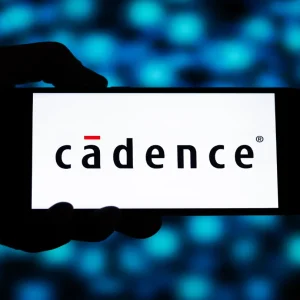
Technology for technology’s sake is meaningless. It has to deliver value to the user in order for it to have any longevity.
One area that has often tip toed along the edges of being useful but can frequently be forgotten about if not delivering real value is that of collaboration software.
Technology in this area comes in various different forms, from cloud services to video conferencing tools, mobile applications and traditional software. It’s an area that is technology rich and vendor heavy.
Elisa Steele, CEO, Jive Software, told CBR: “There’s not a tech application that I can think of today that doesn’t have some kind of collaboration that’s added to it because that’s kind of the nature of our society now.”
Vendors in the area such as Cisco, Microsoft, Jive Software, Box, Dropbox, Egnyte, and now Amazon Web Services, are frequently updating their portfolios with the latest and greatest technology. Recently we’ve seen artificial intelligence, machine learning and various other flavours of data analytics increasingly integrated into products that are now bursting at the seams with tech that’s all designed to help businesses work better.
That’s the real aim of these technologies, to aid collaboration between staff working internally and remotely.
The past month has highlighted just how competitive this space is, and how quickly it is moving.
Amazon Web Services for example just released amazon Chime, a new video conferencing service that puts it in direct competition with the Cisco and Microsoft.
AWS calls it a unified communication service that is designed to make meetings easier and more efficient. The fully managed service goes up against tools such as Microsoft Teams, Cisco Spark and Skype, which is also owned by Microsoft.

Although this is a unified communications announcement, it overlaps significantly into the collaboration tool market and straight into the crosshairs of the likes of Slack.
At the end of last month Slack ramped up its war against workplace email with the introduction of Slack Enterprise Grid. This is basically the enterprise version of its standard collaboration tool.
The company introduced features such as the ability to handle user accounts, user groups and direct messaging across the entire organisation, while grid-level identity is designed to simplify the user experience.
One of the big additions is the addition of unlimited workspaces, which offers the ability to create any number of shared channels between teams. This should hopefully provide flexibility to create communication structures that mirror each organisation’s way of working.
A noticeable trend is that many of these offerings are really playing up the enterprise credentials of their products. Many of these products started out as a simple, often free, collaboration app that simply provides a single location for users to collaborate in.
The enterprise appeal trend is highlighted by Dropbox and the debut of Smart Sync and Paper. Smart Sync works by managing cloud files as if they were local, which means that users can access all files and folders in context on the desktop, but it all sits in the cloud.
The Paper collaboration tool, which was previously in open beta, is now generally available. This tool allows teams to organise content by project and do various other smart things that should help to improve collaborative work.
Last but not least you have Egnyte – perhaps not the best known name in the market but one that has an impressive offering.
On the 8th of February Egnyte announced a new release of Egnyte Connect. The release debuted a new desktop app that allows users to collaborate on any corporate content with no limits on file size, type, or location.
Egnyte CEO, Vineet Jain, told CBR: “At the core level it’s providing a universal access to segmented data. Any of these combinations are possible, a universal access layer on top of that is where the content is being served from.”
Think of it as providing a kind of “content superhighway” that allows users to collaborate on all kinds of files. The company’s updates include tools such as a global file lock mechanism, which creates a lock that is propagated to wherever the file is.

Egnyte’s play is very much focused on hybrid use. The company has identified, like others are starting to, that companies want data to sit on-premises and in the cloud.
Egnyte is a perfect example of how the industry is moving forward with some impressive innovations and it’s really the integration piece that is most important.
To be honest, I’m not a great fan of collaboration tools in general, I see them as adding an extra step into the way that I work. I aim to work as efficiently as possible (although this is frequently a pipe dream) and my experience with collaboration tools has been littered with failure.
My experience has been that collaboration tools are often lacking when it comes to how well they are integrated with services that are used regularly.
A good piece of collaboration software is one that lets you use it natively within Office 365 for example, because that’s something that many users are entrenched in.
Creating a successful integration is not always an easy task and can often be the downfall of what is on the whole a good product.
Having a good relationship, or one that is mutually beneficial, is extremely important for these tools, Steele said: “We do need to work with other companies and we do integrations with them and if we work with them collaboratively the integration comes out better just because then we have the benefit of their product understanding.”
Do businesses underestimate people change management?
Then if the product does answer the question of whether or not it adequately integrates into other commonly used services, you have the issue of how it’s actually deployed because if it’s not done right, then adoption will quickly fall away.
“It’s not because they’re not great at what they do, it’s because it wasn’t connected to all the people and places that the content needed to be connected to. So if you don’t create that connection it’s very typical that a company will adopt a new technology for the right purpose but didn’t execute it in a way that it became durable in the organisation,” said Steele.
Often technology changes are pitched as having to come from the top down, but Steele said: “I don’t think it has to be top down I actually think it’s about designing it correctly whether it’s bottom up or top down so that it’s really helpful.”
Rolling out collaboration software is a big challenge for businesses because it doesn’t just rely upon the success of the technology, it relies upon staff being on board with it.
Vendors are doing all they can to make their products as appealing as possible with the addition of analytics, open APIs, video conferencing, artificial intelligence and a multitude of exciting tech innovations, but in the end it comes down to whether it actually fits in your business.
Western Digital is a prime example of a major business that found a solution that did what was required of it.
The company has used a combination of collaboration tools such as Jive, Box, WebEx and more in order to allow it to communicate with staff that is often in different parts of the world. The technologies also played an important role in accelerating acquisitions.
Western Digital CIO, Steve Phillpott told CBR about the people challenges faced when changing technologies.
“I think most underestimate the people change involved. We were a Lotus Note shop before Office 365 – some people had been using it for 20 years so it was a big change, for many of us it was easy, but for some it was a massive change. So I think people change management is probably one of the biggest things there is that companies underestimate,” said Phillpott.
While there’s definitely challenges that need to be faced when deploying collaboration tools, as there is with all technologies, but if the business gets it right then it can have an immediate impact.
The CIO said: “What happens is that more value is gained as more people learn to use it. So while probably a lot start using a small amount of it, as they use more and more of it they get more and more business value.
“So can you set up a Jive Space or Box area for our group and it becomes a continuous business value process. At the same time when they learn more on the back end the platform, the beauty of SaaS is that it is continuously adding more features and more value so you get this combined effect of learning maturity.”
The rapid innovation in the space of collaboration software is one that is helping to keep competition stiff and customers interested. The addition of things like artificial intelligence, machine learning, and deeper integration helps to keep products fresh and the customer interested.
Constantly adding new features can help to keep users interested in the product, hopefully for long enough so that it becomes natural to use it, but should innovation levels tail off this could lead to users dropping the tool.
Finding the right solution, solving the technical integration, and making sure that people are on-board are all important strands that need to be tied together in order to make a success out of collaboration software.
All of the vendors in this space are looking to solve each of these challenges but will there finally be one that truly stands out ahead of the pack and makes itself THE go-to enterprise collaboration tool?






